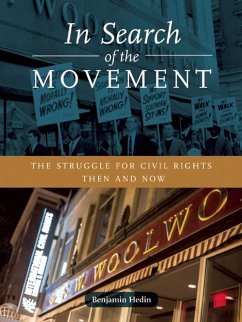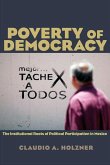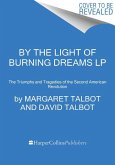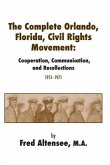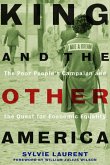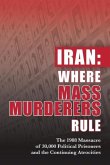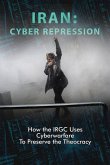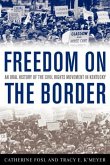13,99 €
inkl. MwSt.
Versandfertig in über 4 Wochen

7 °P sammeln
- Broschiertes Buch
- Merkliste
- Auf die Merkliste
- Bewerten Bewerten
- Teilen
- Produkt teilen
- Produkterinnerung
- Produkterinnerung
Published on the 50th anniversary of the Selma-to-Montgomery, Alabama marches, Ben Hedin analyzes the legacy of the civil rights movement.
Andere Kunden interessierten sich auch für
![Poverty of Democracy: The Institutional Roots of Political Participation in Mexico Poverty of Democracy: The Institutional Roots of Political Participation in Mexico]() Claudio A. HolznerPoverty of Democracy: The Institutional Roots of Political Participation in Mexico59,99 €
Claudio A. HolznerPoverty of Democracy: The Institutional Roots of Political Participation in Mexico59,99 €![By the Light of Burning Dreams By the Light of Burning Dreams]() David TalbotBy the Light of Burning Dreams24,99 €
David TalbotBy the Light of Burning Dreams24,99 €![The Complete Orlando, Florida, Civil Rights Movement The Complete Orlando, Florida, Civil Rights Movement]() Fred AltenseeThe Complete Orlando, Florida, Civil Rights Movement24,99 €
Fred AltenseeThe Complete Orlando, Florida, Civil Rights Movement24,99 €![King and the Other America King and the Other America]() Sylvie LaurentKing and the Other America29,99 €
Sylvie LaurentKing and the Other America29,99 €![Iran Iran]() Ncri U S Representative OfficeIran20,99 €
Ncri U S Representative OfficeIran20,99 €![Iran Iran]() Ncri U S Representative OfficeIran15,99 €
Ncri U S Representative OfficeIran15,99 €![Freedom on the Border Freedom on the Border]() Catherine FoslFreedom on the Border32,99 €
Catherine FoslFreedom on the Border32,99 €-
-
-
Published on the 50th anniversary of the Selma-to-Montgomery, Alabama marches, Ben Hedin analyzes the legacy of the civil rights movement.
Hinweis: Dieser Artikel kann nur an eine deutsche Lieferadresse ausgeliefert werden.
Hinweis: Dieser Artikel kann nur an eine deutsche Lieferadresse ausgeliefert werden.
Produktdetails
- Produktdetails
- Verlag: City Lights Books
- Seitenzahl: 206
- Erscheinungstermin: 31. März 2015
- Englisch
- Abmessung: 203mm x 137mm x 20mm
- Gewicht: 227g
- ISBN-13: 9780872866478
- ISBN-10: 0872866475
- Artikelnr.: 40706952
- Herstellerkennzeichnung
- Libri GmbH
- Europaallee 1
- 36244 Bad Hersfeld
- gpsr@libri.de
- Verlag: City Lights Books
- Seitenzahl: 206
- Erscheinungstermin: 31. März 2015
- Englisch
- Abmessung: 203mm x 137mm x 20mm
- Gewicht: 227g
- ISBN-13: 9780872866478
- ISBN-10: 0872866475
- Artikelnr.: 40706952
- Herstellerkennzeichnung
- Libri GmbH
- Europaallee 1
- 36244 Bad Hersfeld
- gpsr@libri.de
Benjamin Hedin's fiction, essays, and interviews have been published in The New Yorker, Slate, The Nation, The Chicago Tribune, Poets and Writers, Salmagundi, The Georgia Review, The Gettysburg Review, and Radio Silence. He is the editor of Studio A: The Bob Dylan Reader, widely regarded as one of the finest collections of music writing. He is the producer and author of the forthcoming documentary "The Blues House," which tells the story of the search for two forgotten blues singers carried out in Mississippi in June of 1964, during some of the most violent days of the civil rights movement. Hedin was born in Paris, France, and raised in North Carolina and Minnesota. He studied music at the College of William and Mary and in the fall of 2002 entered the Graduate Writing Program at The New School in New York City. After earning his M.F.A. in fiction from The New School he started teaching, first at Long Island University and The New School, and later in the Expository Writing Program at New York University. He is the son of Robert Hedin, the award-winning poet and translator.
Annotated Table of Contents (working draft) Introduction (see Excerpt field) Chapter 1:
The Other March
The chapter begins with the 50th anniversary of the March on Washington, and focuses on the symbology of Martin Luther King, Jr., using that as a way to understand the popular definition of the civil rights movement, what it can and cannot accommodate. In other words, people, even as they deify King, will accede to the demand for equality only so far. It is a very narrow, selective mythology of him that lives on in the popular culture. To that end,
The Other March
is the replica of the March on Washington that King planned for 1968 but did not live to oversee. It was to be the centerpiece of the Poor People
s Campaign, but he was shot a month before it began. What became of that march,
Resurrection City,
when thousands of the nation
s poor occupied the national mall in May of 1968, was a dismal failure, and in many ways time seems to have stood still in the decades since. Chapter 2: This chapter takes place in Raleigh, North Carolina, where there is an authentic revival of the movement as we normally understand it: that is to say, rooted in the Baptist church and focused on massive demonstration and symbolic arrest. I profile William Barber, the reverend who started and is leading the movement; the question, of course, is how timeless or malleable of a template is the Martin Luther King, Jr. model. On days I was there it was willfully nostalgic: freedom songs were ritually sung, there were sermons that rooted the demand for equality in health care and voting rights in the gospel and Constitution. In addition to being nostalgic, the rally was remarkably powerful as well.
Charismatic leadership
so often gets a bad rap in movement circles, since it is believed that it spawns a dependency and creates a vacuum when the leader departs, but listening to Reverend Barber, being in the packed church, I was in awe of the power he wielded, the inspiration he summoned. My time in Raleigh, incidentally, yielded other observations, particularly about the eternal tension that exists in the movement between youth and age, between the impatience, almost recklessness of one and the circumspection of the other. These will probably be detailed in the last chapter. Finally, in this chapter I profile another Baptist minister, Michael Minor of Hernando, Mississippi, whose church is working to help thousands of African Americans sign up for health insurance provided by the Affordable Care Act. Again, the centrality of the church is stressed, yet Minor is much more of a community organizer than he is a leader in the sense that Barber is or King was. So his story serves as a kind of pivot between the Raleigh events and the Johns Island chapter. Chapter 3/4: The region around Charleston, South Carolina was recently christened
the corridor of shame
by one documentarian because of the decrepit condition of its public schools. I drive through it, visit some of the schools and talk to a few teachers; I also visit with some of the surviving principles of the Briggs v. Elliott case, the first of five that were eventually packaged into Brown v. Board of Education, and then move on to Johns Island, South Carolina, to detail the citizenship schools that were conducted there in the 1950s. Beginning with only ten students who were taught basic matters of literacy and citizenship, the schools eventually spread through the Low Country of South Carolina and across all of the South. They helped thousands of people register to vote and, more, to wield a much greater degree of control over their lives. But almost nobody knows this story, and it is in this chapter that I examine centrally the way the movement has been reduced by history and its needs. As I wrote in the original prospectus:
The human mind is very uneasy with continua. History must be broken down into narrative chapters. That is how we receive it: in units of story, characters engaged dramatically in one setting or another. Narratives possess by definition a beginning and an end, ideally joined in such a way as to make a round and felicitous shape. If you start, for instance, in Montgomery, Alabama with a bus boycott you may as well end there, a decade later, after a march of biblical character. When chopped in such a way the civil rights movement makes for a perfect narrative. Literally perfect: there is not a single archetype that it lacks. There is the hero-prophet-martyr in the form of King; there is moral counterbalance, what looks from a distance like perfect good and perfect evil; there is suspense, setback, a give-and-tug to fill the story
s middle; and there is, in the Selma to Montgomery march, the cathartic and victorious conclusion. A story does not need a victory, but it must above all things be purposive. Even the most tragic account should offer some lesson. Otherwise why would we spend the time? And there is no greater outcome, no quest or purpose, quite like freedom.
In the book, this argument unfolds over several pages. Incidentally, the movement
s foremost historian, Taylor Branch, recently wrote that the first volume of his trilogy, Parting the Waters, is dedicated to Septima Clark, one of the planners of the citizenship schools, as
a personal gesture of tribute mixed with regret, because I found it impossible within my storytelling rules to include Septima Clark in proportion to her influence.
As I say, more on this in the book
but it is a staggering aside. My visit with David Dennis and a discussion of music are in this chapter too. Chapter 5: Birmingham, the children
s crusade and nonviolence Chapter 6:
The Promised Land
This chapter considers the future, considering in particular the chance that something equivalent to what went on in the 1960s might happen again. There would need to be a groundswell of young men and women, and I talk with a few younger activists and some children of famous movement luminaries. Still, the dominant voices of the chapter are those of two veterans of SNCC: Bob Moses, whose view of things is too complex to distill here
the challenge, he told me, has to do with enlarging the definition of
We the People
from the preamble to the Constitution
and Bob Zellner. In his last sermon, in Memphis in April of 1968, Martin Luther King, Jr. famously said
we, as a people, will get to the promised land.
Zellner told me that he now believes the struggle itself is the promised land, an idea I plan to test to lead into the book
s ending.
The Other March
The chapter begins with the 50th anniversary of the March on Washington, and focuses on the symbology of Martin Luther King, Jr., using that as a way to understand the popular definition of the civil rights movement, what it can and cannot accommodate. In other words, people, even as they deify King, will accede to the demand for equality only so far. It is a very narrow, selective mythology of him that lives on in the popular culture. To that end,
The Other March
is the replica of the March on Washington that King planned for 1968 but did not live to oversee. It was to be the centerpiece of the Poor People
s Campaign, but he was shot a month before it began. What became of that march,
Resurrection City,
when thousands of the nation
s poor occupied the national mall in May of 1968, was a dismal failure, and in many ways time seems to have stood still in the decades since. Chapter 2: This chapter takes place in Raleigh, North Carolina, where there is an authentic revival of the movement as we normally understand it: that is to say, rooted in the Baptist church and focused on massive demonstration and symbolic arrest. I profile William Barber, the reverend who started and is leading the movement; the question, of course, is how timeless or malleable of a template is the Martin Luther King, Jr. model. On days I was there it was willfully nostalgic: freedom songs were ritually sung, there were sermons that rooted the demand for equality in health care and voting rights in the gospel and Constitution. In addition to being nostalgic, the rally was remarkably powerful as well.
Charismatic leadership
so often gets a bad rap in movement circles, since it is believed that it spawns a dependency and creates a vacuum when the leader departs, but listening to Reverend Barber, being in the packed church, I was in awe of the power he wielded, the inspiration he summoned. My time in Raleigh, incidentally, yielded other observations, particularly about the eternal tension that exists in the movement between youth and age, between the impatience, almost recklessness of one and the circumspection of the other. These will probably be detailed in the last chapter. Finally, in this chapter I profile another Baptist minister, Michael Minor of Hernando, Mississippi, whose church is working to help thousands of African Americans sign up for health insurance provided by the Affordable Care Act. Again, the centrality of the church is stressed, yet Minor is much more of a community organizer than he is a leader in the sense that Barber is or King was. So his story serves as a kind of pivot between the Raleigh events and the Johns Island chapter. Chapter 3/4: The region around Charleston, South Carolina was recently christened
the corridor of shame
by one documentarian because of the decrepit condition of its public schools. I drive through it, visit some of the schools and talk to a few teachers; I also visit with some of the surviving principles of the Briggs v. Elliott case, the first of five that were eventually packaged into Brown v. Board of Education, and then move on to Johns Island, South Carolina, to detail the citizenship schools that were conducted there in the 1950s. Beginning with only ten students who were taught basic matters of literacy and citizenship, the schools eventually spread through the Low Country of South Carolina and across all of the South. They helped thousands of people register to vote and, more, to wield a much greater degree of control over their lives. But almost nobody knows this story, and it is in this chapter that I examine centrally the way the movement has been reduced by history and its needs. As I wrote in the original prospectus:
The human mind is very uneasy with continua. History must be broken down into narrative chapters. That is how we receive it: in units of story, characters engaged dramatically in one setting or another. Narratives possess by definition a beginning and an end, ideally joined in such a way as to make a round and felicitous shape. If you start, for instance, in Montgomery, Alabama with a bus boycott you may as well end there, a decade later, after a march of biblical character. When chopped in such a way the civil rights movement makes for a perfect narrative. Literally perfect: there is not a single archetype that it lacks. There is the hero-prophet-martyr in the form of King; there is moral counterbalance, what looks from a distance like perfect good and perfect evil; there is suspense, setback, a give-and-tug to fill the story
s middle; and there is, in the Selma to Montgomery march, the cathartic and victorious conclusion. A story does not need a victory, but it must above all things be purposive. Even the most tragic account should offer some lesson. Otherwise why would we spend the time? And there is no greater outcome, no quest or purpose, quite like freedom.
In the book, this argument unfolds over several pages. Incidentally, the movement
s foremost historian, Taylor Branch, recently wrote that the first volume of his trilogy, Parting the Waters, is dedicated to Septima Clark, one of the planners of the citizenship schools, as
a personal gesture of tribute mixed with regret, because I found it impossible within my storytelling rules to include Septima Clark in proportion to her influence.
As I say, more on this in the book
but it is a staggering aside. My visit with David Dennis and a discussion of music are in this chapter too. Chapter 5: Birmingham, the children
s crusade and nonviolence Chapter 6:
The Promised Land
This chapter considers the future, considering in particular the chance that something equivalent to what went on in the 1960s might happen again. There would need to be a groundswell of young men and women, and I talk with a few younger activists and some children of famous movement luminaries. Still, the dominant voices of the chapter are those of two veterans of SNCC: Bob Moses, whose view of things is too complex to distill here
the challenge, he told me, has to do with enlarging the definition of
We the People
from the preamble to the Constitution
and Bob Zellner. In his last sermon, in Memphis in April of 1968, Martin Luther King, Jr. famously said
we, as a people, will get to the promised land.
Zellner told me that he now believes the struggle itself is the promised land, an idea I plan to test to lead into the book
s ending.
Annotated Table of Contents (working draft) Introduction (see Excerpt field) Chapter 1:
The Other March
The chapter begins with the 50th anniversary of the March on Washington, and focuses on the symbology of Martin Luther King, Jr., using that as a way to understand the popular definition of the civil rights movement, what it can and cannot accommodate. In other words, people, even as they deify King, will accede to the demand for equality only so far. It is a very narrow, selective mythology of him that lives on in the popular culture. To that end,
The Other March
is the replica of the March on Washington that King planned for 1968 but did not live to oversee. It was to be the centerpiece of the Poor People
s Campaign, but he was shot a month before it began. What became of that march,
Resurrection City,
when thousands of the nation
s poor occupied the national mall in May of 1968, was a dismal failure, and in many ways time seems to have stood still in the decades since. Chapter 2: This chapter takes place in Raleigh, North Carolina, where there is an authentic revival of the movement as we normally understand it: that is to say, rooted in the Baptist church and focused on massive demonstration and symbolic arrest. I profile William Barber, the reverend who started and is leading the movement; the question, of course, is how timeless or malleable of a template is the Martin Luther King, Jr. model. On days I was there it was willfully nostalgic: freedom songs were ritually sung, there were sermons that rooted the demand for equality in health care and voting rights in the gospel and Constitution. In addition to being nostalgic, the rally was remarkably powerful as well.
Charismatic leadership
so often gets a bad rap in movement circles, since it is believed that it spawns a dependency and creates a vacuum when the leader departs, but listening to Reverend Barber, being in the packed church, I was in awe of the power he wielded, the inspiration he summoned. My time in Raleigh, incidentally, yielded other observations, particularly about the eternal tension that exists in the movement between youth and age, between the impatience, almost recklessness of one and the circumspection of the other. These will probably be detailed in the last chapter. Finally, in this chapter I profile another Baptist minister, Michael Minor of Hernando, Mississippi, whose church is working to help thousands of African Americans sign up for health insurance provided by the Affordable Care Act. Again, the centrality of the church is stressed, yet Minor is much more of a community organizer than he is a leader in the sense that Barber is or King was. So his story serves as a kind of pivot between the Raleigh events and the Johns Island chapter. Chapter 3/4: The region around Charleston, South Carolina was recently christened
the corridor of shame
by one documentarian because of the decrepit condition of its public schools. I drive through it, visit some of the schools and talk to a few teachers; I also visit with some of the surviving principles of the Briggs v. Elliott case, the first of five that were eventually packaged into Brown v. Board of Education, and then move on to Johns Island, South Carolina, to detail the citizenship schools that were conducted there in the 1950s. Beginning with only ten students who were taught basic matters of literacy and citizenship, the schools eventually spread through the Low Country of South Carolina and across all of the South. They helped thousands of people register to vote and, more, to wield a much greater degree of control over their lives. But almost nobody knows this story, and it is in this chapter that I examine centrally the way the movement has been reduced by history and its needs. As I wrote in the original prospectus:
The human mind is very uneasy with continua. History must be broken down into narrative chapters. That is how we receive it: in units of story, characters engaged dramatically in one setting or another. Narratives possess by definition a beginning and an end, ideally joined in such a way as to make a round and felicitous shape. If you start, for instance, in Montgomery, Alabama with a bus boycott you may as well end there, a decade later, after a march of biblical character. When chopped in such a way the civil rights movement makes for a perfect narrative. Literally perfect: there is not a single archetype that it lacks. There is the hero-prophet-martyr in the form of King; there is moral counterbalance, what looks from a distance like perfect good and perfect evil; there is suspense, setback, a give-and-tug to fill the story
s middle; and there is, in the Selma to Montgomery march, the cathartic and victorious conclusion. A story does not need a victory, but it must above all things be purposive. Even the most tragic account should offer some lesson. Otherwise why would we spend the time? And there is no greater outcome, no quest or purpose, quite like freedom.
In the book, this argument unfolds over several pages. Incidentally, the movement
s foremost historian, Taylor Branch, recently wrote that the first volume of his trilogy, Parting the Waters, is dedicated to Septima Clark, one of the planners of the citizenship schools, as
a personal gesture of tribute mixed with regret, because I found it impossible within my storytelling rules to include Septima Clark in proportion to her influence.
As I say, more on this in the book
but it is a staggering aside. My visit with David Dennis and a discussion of music are in this chapter too. Chapter 5: Birmingham, the children
s crusade and nonviolence Chapter 6:
The Promised Land
This chapter considers the future, considering in particular the chance that something equivalent to what went on in the 1960s might happen again. There would need to be a groundswell of young men and women, and I talk with a few younger activists and some children of famous movement luminaries. Still, the dominant voices of the chapter are those of two veterans of SNCC: Bob Moses, whose view of things is too complex to distill here
the challenge, he told me, has to do with enlarging the definition of
We the People
from the preamble to the Constitution
and Bob Zellner. In his last sermon, in Memphis in April of 1968, Martin Luther King, Jr. famously said
we, as a people, will get to the promised land.
Zellner told me that he now believes the struggle itself is the promised land, an idea I plan to test to lead into the book
s ending.
The Other March
The chapter begins with the 50th anniversary of the March on Washington, and focuses on the symbology of Martin Luther King, Jr., using that as a way to understand the popular definition of the civil rights movement, what it can and cannot accommodate. In other words, people, even as they deify King, will accede to the demand for equality only so far. It is a very narrow, selective mythology of him that lives on in the popular culture. To that end,
The Other March
is the replica of the March on Washington that King planned for 1968 but did not live to oversee. It was to be the centerpiece of the Poor People
s Campaign, but he was shot a month before it began. What became of that march,
Resurrection City,
when thousands of the nation
s poor occupied the national mall in May of 1968, was a dismal failure, and in many ways time seems to have stood still in the decades since. Chapter 2: This chapter takes place in Raleigh, North Carolina, where there is an authentic revival of the movement as we normally understand it: that is to say, rooted in the Baptist church and focused on massive demonstration and symbolic arrest. I profile William Barber, the reverend who started and is leading the movement; the question, of course, is how timeless or malleable of a template is the Martin Luther King, Jr. model. On days I was there it was willfully nostalgic: freedom songs were ritually sung, there were sermons that rooted the demand for equality in health care and voting rights in the gospel and Constitution. In addition to being nostalgic, the rally was remarkably powerful as well.
Charismatic leadership
so often gets a bad rap in movement circles, since it is believed that it spawns a dependency and creates a vacuum when the leader departs, but listening to Reverend Barber, being in the packed church, I was in awe of the power he wielded, the inspiration he summoned. My time in Raleigh, incidentally, yielded other observations, particularly about the eternal tension that exists in the movement between youth and age, between the impatience, almost recklessness of one and the circumspection of the other. These will probably be detailed in the last chapter. Finally, in this chapter I profile another Baptist minister, Michael Minor of Hernando, Mississippi, whose church is working to help thousands of African Americans sign up for health insurance provided by the Affordable Care Act. Again, the centrality of the church is stressed, yet Minor is much more of a community organizer than he is a leader in the sense that Barber is or King was. So his story serves as a kind of pivot between the Raleigh events and the Johns Island chapter. Chapter 3/4: The region around Charleston, South Carolina was recently christened
the corridor of shame
by one documentarian because of the decrepit condition of its public schools. I drive through it, visit some of the schools and talk to a few teachers; I also visit with some of the surviving principles of the Briggs v. Elliott case, the first of five that were eventually packaged into Brown v. Board of Education, and then move on to Johns Island, South Carolina, to detail the citizenship schools that were conducted there in the 1950s. Beginning with only ten students who were taught basic matters of literacy and citizenship, the schools eventually spread through the Low Country of South Carolina and across all of the South. They helped thousands of people register to vote and, more, to wield a much greater degree of control over their lives. But almost nobody knows this story, and it is in this chapter that I examine centrally the way the movement has been reduced by history and its needs. As I wrote in the original prospectus:
The human mind is very uneasy with continua. History must be broken down into narrative chapters. That is how we receive it: in units of story, characters engaged dramatically in one setting or another. Narratives possess by definition a beginning and an end, ideally joined in such a way as to make a round and felicitous shape. If you start, for instance, in Montgomery, Alabama with a bus boycott you may as well end there, a decade later, after a march of biblical character. When chopped in such a way the civil rights movement makes for a perfect narrative. Literally perfect: there is not a single archetype that it lacks. There is the hero-prophet-martyr in the form of King; there is moral counterbalance, what looks from a distance like perfect good and perfect evil; there is suspense, setback, a give-and-tug to fill the story
s middle; and there is, in the Selma to Montgomery march, the cathartic and victorious conclusion. A story does not need a victory, but it must above all things be purposive. Even the most tragic account should offer some lesson. Otherwise why would we spend the time? And there is no greater outcome, no quest or purpose, quite like freedom.
In the book, this argument unfolds over several pages. Incidentally, the movement
s foremost historian, Taylor Branch, recently wrote that the first volume of his trilogy, Parting the Waters, is dedicated to Septima Clark, one of the planners of the citizenship schools, as
a personal gesture of tribute mixed with regret, because I found it impossible within my storytelling rules to include Septima Clark in proportion to her influence.
As I say, more on this in the book
but it is a staggering aside. My visit with David Dennis and a discussion of music are in this chapter too. Chapter 5: Birmingham, the children
s crusade and nonviolence Chapter 6:
The Promised Land
This chapter considers the future, considering in particular the chance that something equivalent to what went on in the 1960s might happen again. There would need to be a groundswell of young men and women, and I talk with a few younger activists and some children of famous movement luminaries. Still, the dominant voices of the chapter are those of two veterans of SNCC: Bob Moses, whose view of things is too complex to distill here
the challenge, he told me, has to do with enlarging the definition of
We the People
from the preamble to the Constitution
and Bob Zellner. In his last sermon, in Memphis in April of 1968, Martin Luther King, Jr. famously said
we, as a people, will get to the promised land.
Zellner told me that he now believes the struggle itself is the promised land, an idea I plan to test to lead into the book
s ending.
